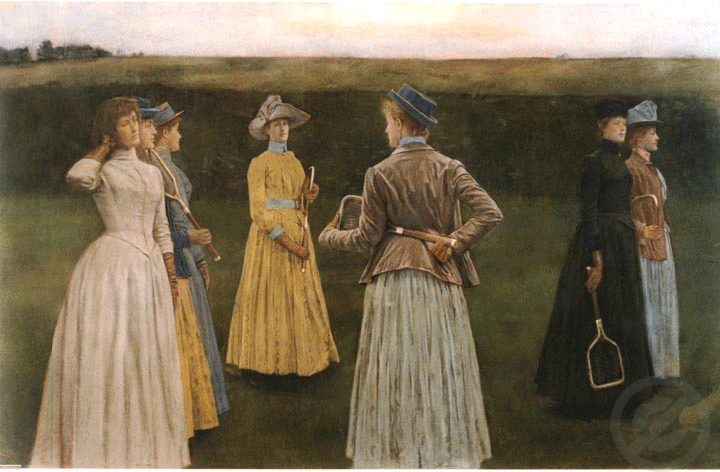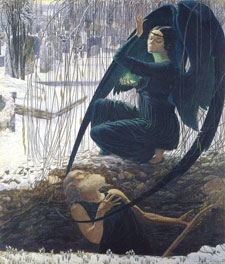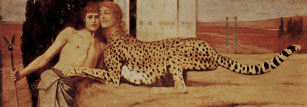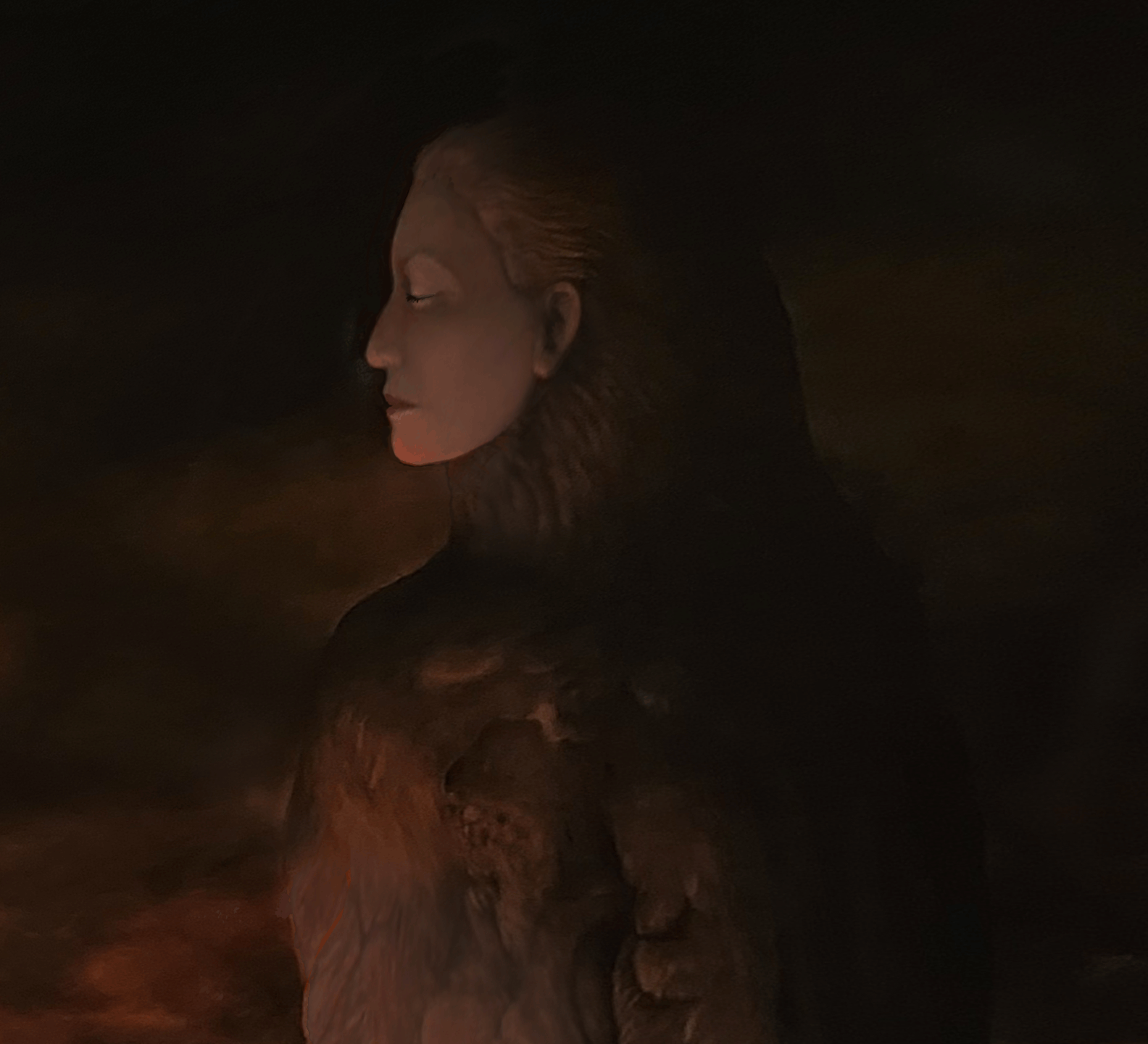| Home |
| Into the Land |
| Parrish at Aspet |
| Winged |
| Symbolism |
| Artist Information |
| sugar creek farm |
| tunnel vision |
| studio |
| The Decadent World of Symbolism |
During the Victorian era, Symbolism was an underground intellectual movement reacting to the strict mores of the time. The style had remnants of the illustrative literary style of the Romantic Movement and shared a reaction against naturalism expounded by the Post-Impressionists. However, the content of Symbolist communication was cryptic and mysterious. Effects of natural light on the object studiously explored by the Impressionists and Post-Impressionists were disregarded. In Symbolism, a surreal light permeated an eerie coldness on a nearly shadowless landscape populated by scenes of death and perversion, with overt or intimated themes of mysticism, necrophilia, misogyny, and bestiality. Symbolist paintings have a pervading sense of unease comparable to the photographs of the time. Photography was now becoming readily accessible to the masses, and Victorians began to capture images of life and scenes of death. A disturbing underlying element exists in photographs intended to portray opulence, personal appearance, and luxury. Victorians lived in the time of grand tours, great hotels, and healing water spas. Dressed in the finest apparel and accessories, faces blank and expressionless, bodies stiff and awkward, Victorians appear to be emotionally separate in otherworldly group portraits. Symbolism conveys a similar melancholic psyche. The use of photographs as a visual resource by Symbolist painters influences our perception of the Zeitgeist of the turn of the last century. Although Symbolist artist Fernand Khnopff hid his use of photo projection until his death, Khnopff and other Symbolists utilized photography as a tool in planning and execution of works. Memories by Khnopff emphasizes his obsession with creating images of his sister, Marguerite. In 2003, the Musée d'Orsay acquired two photographs of Marguerite taken by Khnopff.
The Regionalist Landscapes of Maxfield Parrish
Maxfield Parrish was a contemporary to the Symbolist Movement and is usually categorized as a Symbolist painter. He was strongly influenced by the illustrations of Alphonse Mucha. As Mucha portrayed the perfected image of the female face and form, Parrish portrayed the perfected image of the environment. His fantasy illustrations set in gardens, castles, mountains, and woods are so perfected they provide a perceptible image of Paradise. In the 1930's, Parrish turned away from the fantasy world he had created time after time in illustrations for posters, books, murals, and chocolate boxes. As the United States was suffering economic depression and the Midwest was becoming a Dustbowl, Parrish began painting the ideal landscape around his New Hampshire home, The Oaks. The image of Paradise is now a purely rural, purely American scene filled with peace filled homes illuminated by electricity in the early twilight. The essence of life in the American town was captured by Parrish as he drew inspiration from the picturesque buildings and land around the Connecticut River border between the states of New Hampshire and Vermont. Other Regionalists include Thomas Hart Benton of Missouri, Grant Wood of Iowa, Edward Hopper of New York State, Andrew Wyeth of Maine, John Steuart Curry of Kansas, and Charles Banks Wilson of the Arkansas-Oklahoma border. |
Symbolist Paintings |
||

|
||


